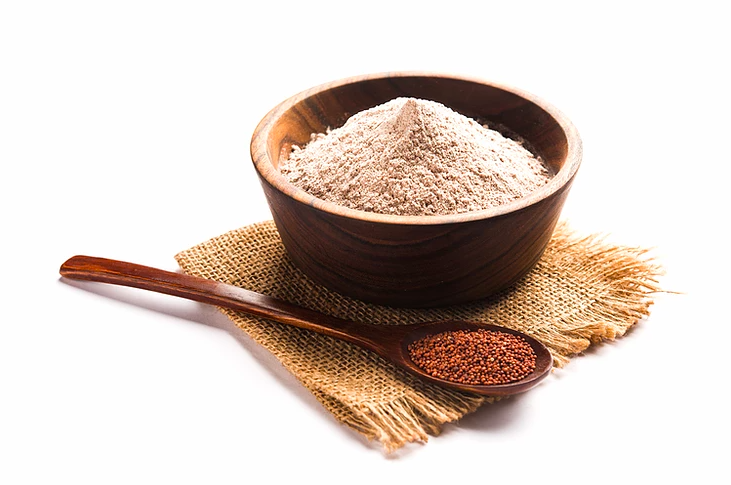Ragi originated in East Africa and spread to much of South India and Nepal. It has been a staple food for at least 2000 years. Ragi is a type of a grain that has been used for centuries by Africans and South Indians as a part of their staple food. It is also known as Finger Millet. It is an important crop that supports food supplies. The head portion of the Ragi plant resembles the fingers of a human hand. Hence the name Finger Millet. Ragi is renowned for its nutritional value. It has the right proportion of Amino acids, Vitamins, and Fiber. Finger millets have a high shelf life. As a crop, Ragi is drought tolerant and can be cultivated in areas with moderate rainfall.

Has Antidiabetic Properties
Diabetes is a lifestyle disease which is on the rise globally; the demand for foods that helps to combat diabetes. Ragi is a superfood that can help you to fight against diabetes and its complications.
The presence of high fibre and carbohydrates, which are slow to digest when compared with other millets makes ragi a recommended diet for a person with diabetes. Ragi has properties that can delay the absorption of glucose which is beneficial for diabetic patients.
Rich in Calcium and Iron
Calcium is necessary for healthy bones. If you don’t consume dairy, then you need an alternative diet that can provide you with the calcium required. Ragi is one of the richest non-dairy sources of calcium. In addition to calcium, ragi is also rich in iron.
Antimicrobial Properties
Ragi possesses antimicrobial properties that can protect you against harmful pathogens. These antimicrobial properties exhibited by the finger millet might be due to the presence of polyphenolic compounds.
Cooling effect on the body
It is essential to consume foods and drinks that can reduce body heat. This helps a person to stay hydrated.
Healing Properties of Ragi
Ragi has complex compounds that can improve the healing process when injured. The antioxidant properties of millets too backed the healing process.
Antiulcer Properties
Ulcers are a health concern affecting people of all ages. Consuming nutritious food will bring you significant relief. Ragi is a comfort food due because if its anti-ulcerative values.
Antioxidant properties of Ragi
Ragi has an abundant source of Vitamins and Phytochemicals. These properties act as antioxidants.
Rich in magnesium
Our body needs Magnesium for various biochemical reactions. This helps in muscle and nerve functioning regulates blood pressure. Ragi is one among magnesium-rich foods that must be included in our diet.
Ragi in our daily food
Besides its nutritional properties, Ragi is multidimensional and can be consumed in various forms along with its traditional cooking, this nutritious grain can be used to prepare a variety of foods like idli, roti, dosa and pakoda as well. If you have a sweet tooth, you can prepare ragi ladoo, ragi halwa and ragi cookies. Ragi flour is used to make bread and other baked goods.
